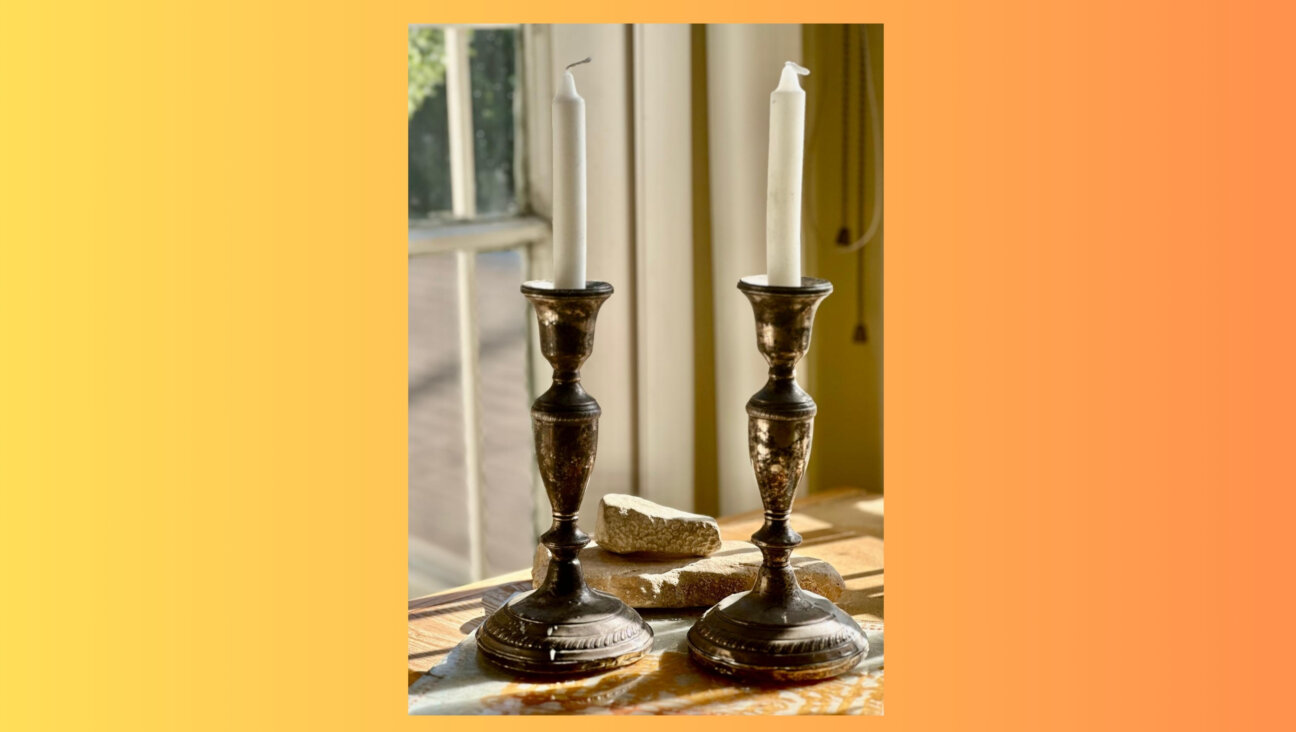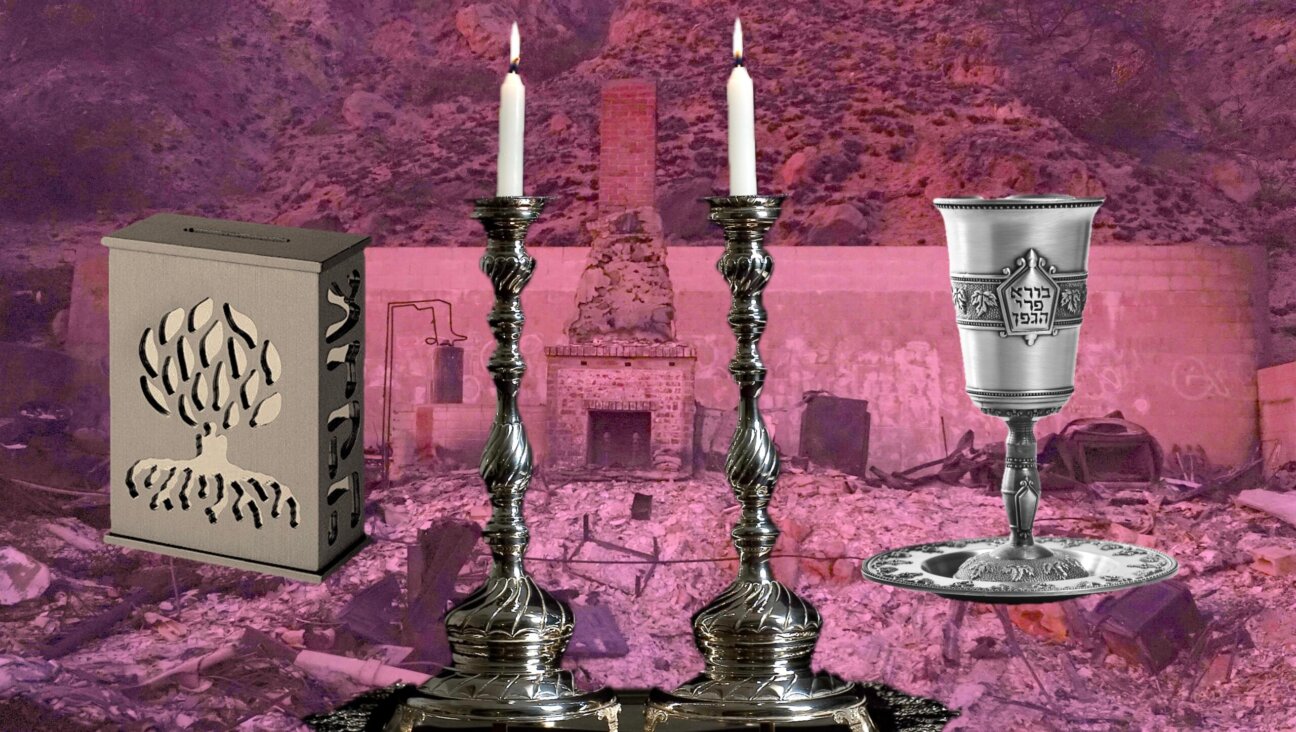To Boldly Go Where No Jew Has Gone: Book Features Klingon Intermarriage
Esther Silvers is boldly going where no Jew has gone before —under the chupah with a Klingon.
The main character in the “Star Trek” e-book series, “Starfleet Corps of Engineers,” Esther is marrying out (of the species) — to Khor, the son of the Klingon ambassador to Earth. The latest installment of the series, “Creative Couplings,” by Glenn Hauman and Aaron Rosenberg, chronicles the culmination of their courtship.
By the time the couple meet up in the futuristic “Star Trek” universe, Jews have been intermarrying for centuries. Klingons have taken up the practice, as well.
“We’ve seen it in ‘Star Trek: The Next Generation’ — between a Klingon and a Trill,” said Rabbi David Honigsberg, an ardent Trekkie who served as a consultant to the new novel. “There are half-Klingons. Mr. Spock was half-Vulcan and half-human, so interfaith weddings are a part of the ‘Star Trek’ cannon.”
This wedding, however, marks the first time that a Klingon and a Jew have married — and they have chosen to do so in a predominantly Jewish ceremony.
“Star Trek” always has had Jewish touches, starting with the two actors (William Shatner and Leonard Nimoy) who served as the franchise’s first and most popular standard bearers. By now, it is common knowledge that Nimoy based Mr. Spock’s split-finger Vulcan greeting on the priestly blessing of the ancient Israelites. Still, the “J” word never came up in five “Star Trek” television series and nine motion pictures. It was not until the 1997 novel “Vulcans Forge” that a Jewish character — David Rabin, named after the slain Israeli prime minister — finally materialized in the Star Trek universe.
Now “Starfleet Corps of Engineers,” which was launched in 2000, is breaking new ground with the intergalactic marriage plot line.
Jewish characters and plot lines were “something we felt was lacking in the various ‘Star Trek’ crews that we’ve seen in print,” series editor Keith R.A. DeCandido said.
“Starfleet Corps of Engineers” tells the story of the da Vinci, a starship manned by human engineers who wander the universe studying the technology of dangerous weapons that they disarm. The captain of the fleet is David Gold, a practicing Jew with a rabbi wife and a large, sprawling family.
“Back around episode 14 of the series it was established that their granddaughter, Esther, was dating the son of the Klingon ambassador,” Hauman said. “They met and they began talking the finer points of philosophy, and they hit it off.”
The creators of the series knew that somewhere down the line, the star-crossed lovers would have to get married.
In the first part of “Creative Couplings,” Klingon and Jewish families meet and begin the thorny negotiations over wedding details.
Esther Silver is, for lack of a better term, a Jewish Earthling Princess. Not only does she want a rabbi to officiate, but she also dreams of bridesmaids, flowers, grand ice sculptures and all the frills that any other JEP would see as her birthright.
This focus on the material does not mesh with the spartan Klingon way of life. In Klingon society, the expectation is that the son of an ambassador will be married in the solemnity and dignity of a military wedding.
The authors of “Creative Couplings” did not take the differences in cultures lightly.
“We were very respectful of the Jewish community, particularly,” Hauman said, adding that he and his co-author were also pretty respectful of Klingon sensitivities.
“One of the particular oddities with ‘Star Trek’ people is that they tend to sit down and treat it as something more than fiction,” Hauman said. “It’s more a ‘This is the way it’s going to be.’”
Hauman added, “There’s a bet between myself and my editor about how soon before we were going to get a request to use this as a template for somebody’s [real-life] wedding.”
Esther and Khor opt for a traditional Jewish ceremony. The bride encircles Khor, as four Klingon warriors hold up the chupah with their weapons. Instead of a best man, Khor has a Tawi’Yan — a sword bearer. A bride dressed in white is scandalous for the Klingons but nobody made too big a deal. The Klingon orchestra strikes up a klezmer tune. Tears — and other things — are shed (“I always secrete at weddings,” one guest admits).
At the end of the ceremony, Khor stomps on the glass.
“There was some discussion” about the breaking of the glass, Hauman said. “It’s supposed to be about the destruction of the Temple, and… we weren’t sure whether the Temple would be rebuilt in the 24th century.”
The writers finally decided that the breaking of the glass has taken on many more meanings within Judaism, and the tradition would endure — rebuilt Temple or not.
As for the children, Honigsberg predicted that they definitely will be Jewish, since all the various synagogue movements in the 21st century recognize matrilineal descent.
But will they be raised Jewish? The book offers no answer.
This much, though, seems clear: There won’t be a Christmas tree — both sets of in-laws would likely object.
A message from our Publisher & CEO Rachel Fishman Feddersen

I hope you appreciated this article. Before you go, I’d like to ask you to please support the Forward’s award-winning, nonprofit journalism so that we can be prepared for whatever news 2025 brings.
At a time when other newsrooms are closing or cutting back, the Forward has removed its paywall and invested additional resources to report on the ground from Israel and around the U.S. on the impact of the war, rising antisemitism and polarized discourse.
Readers like you make it all possible. Support our work by becoming a Forward Member and connect with our journalism and your community.
— Rachel Fishman Feddersen, Publisher and CEO























